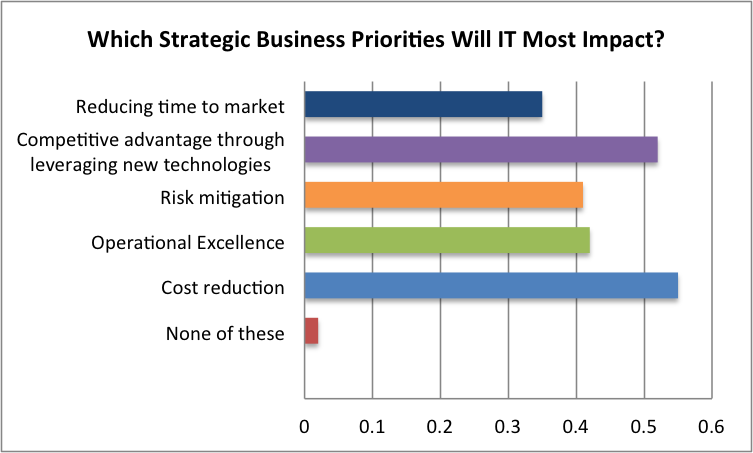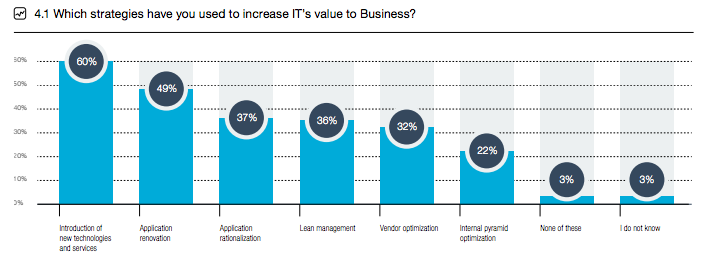It’s easy to assume that developers, employed by lines of business, have supplanted the CIO forever.
As a recent Forrester report uncovered, traditional, IT-led technology purchases are shrinking—from 55% To 47%. Still, with a mere 7.2% of tech purchases being driven solely by the line of business, something more profound is underway. That “something” is almost certainly a new wave of IT and business collaboration.
The CIO, in other words, is not dead yet.
Cats And Dogs, Together At Last
The primary driver of collaboration between IT and business is somewhat surprising. According to CapGemini, which interviewed over 1,100 CIOs and top IT decision-makers, technology is simply too important to have one group manage it:
[T]he gap between corporate ambitions and the state of the application landscape is now felt more than ever: it is no longer “just” a matter of cost and manageability, it is the indispensable role of technology as a crucial enabler for innovation, renewal and business expansion that now takes center stage. In this context, the alignment between Business and IT is a top priority.
Both groups could view technology as a competitive differentiator without actually working together. What CapGemini’s survey finds, however, is that enterprises increasingly discover that it’s optimal for the two groups to work together to put technology to work most effectively. The more closely the two groups are aligned, the more IT drives the technology agenda in the company, with a real focus on competitive differentiation:

This shift from cost-cutting to real innovation has liberated IT to be a real partner to the line of business, rather than “Dr. No.”
Never Waste A Good Crisis
Ironically, the thing forcing IT and business together has been legacy infrastructure, which continually hobbles new application development is its near-crisis state.
Enterprises want desperately to take advantage of Big Data, mobile and other trends, but their existing infrastructure hampers their ambitions. This problem, more than anything else, has aligned the two groups, as it has forced enterprises to look seriously at replacing old-world infrastructure.
As the report finds:
Industrialization and standardization may no longer be sufficient as the pent-up demand for the next generation of applications by Business increases considerably and the pace of application landscape renewal proves to be too low.
Alternative rationalization strategies need to be considered in that case…[including] more radical strategies that aim for daring, impactful changes (e.g.,“ripping and replacing” legacy custom or ERP applications by highly standardized SaaS solutions). In the latter case, though, the transformative impact on the organization, its processes, its governance and its people should not be underestimated, the benefits can be considerable.
When IT moves too slowly, or when the two teams are poorly aligned, the business side has typically embraced the cloud rather aggressively, something ReadWrite has reported before. Therefore, while CapGemini found that three times as many CIOs are involved in initiating 35–65% of application developments than they were three years ago, when it comes to cloud services, business leads by almost 50%.
Overall, however, IT and business increasingly see each other as partners in reducing cruft and improving the enterprise application portfolio.

Make no mistake: IT and business still have a long way to go to reach deep collaboration. But we’re moving in the right direction. The “us” and “them” mentality is rapidly disappearing in the face of a real need to embrace the future of data. We should expect this trend to only continue.
Lede image courtesy of Shutterstock.










